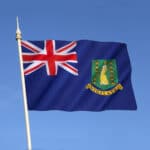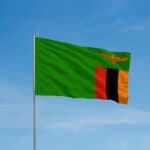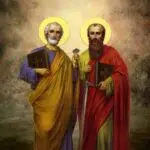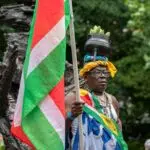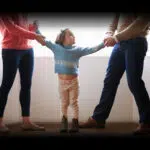National Television Heritage Day, which we honor on July 1 every year, has become one of America’s favorite celebrations. Can you believe that we have been watching T.V. for over 100 years now? It seems strange that we have been sitting in front of a plastic box and being entertained for more than a century. In fact, as of 2011, 96.7% of households in the United States own a television set, with some owning multiple T.V. sets, in their lounges and their bedrooms. These days, we need the Internet to stream shows, and everything is released at the same time; no more waiting for the next episode the following week. These technological changes inspire many people to go back to basics.
History of National Television Heritage Day
Television was first available in the late 1920s, but it took several years before the new technology was marketed to consumers. Following WWII, improved black-and-white television broadcasting gained popularity in the United Kingdom and the United States, which launched the popularity of T.V.s and their presence in homes and offices. In the beginning, television was almost exclusively used to influence public opinion in the 1950s, for example, when even commercials were advertising propaganda. It wasn’t until the 1960s that color broadcasting was introduced in the United States.From then on, the way we watch T.V. has evolved so much that we can now watch our favorite television shows on our phones or tablets while in the car, in bed, or in public spaces. The content that is shown on T.V. has also grown exponentially since the late 1960s and 70s with movie rentals through television networks, live T.V. events, and the rise of videotape, D.V.D.s and Blu- rays, and of course, smart T.V.s that can host a variety of online platforms like Netflix, Hulu, Amazon Prime. There is also much more content readily available that it has become impossible to keep up with everything that is shown on T.V.!We have changed the way we consume media since the invention of the television, and we have seen significant changes in society and cultures around the world. With technology and T.V. evolving so frequently, people wanted to remember where it all started; back in the 1950s, when there were a handful of regular T.V. programming and easily digestible volumes of entertainment.
National Television Heritage Day timeline
Television is broadcast in color for the first time in history in the United States.
The cable-originated television channel and premium cable service ‘HBO’ (Home Box Office) launches.
Three new networks launch and join the ranks of CBS, NBC, Fox, and ABC; they are the WB, UPN, and Independent Television.
Netflix, formerly a D.V.D. rental service, launches its streaming media service, introducing video on demand via the Internet.
“House of Cards” and “Orange is the New Black,” Netflix’s debut original series, premiere and become overnight hits, changing the way the world watches T.V.
National Television Heritage Day FAQs
Why is television so important?
News, current events, and historical programming can help young people better understand other cultures and people. Documentaries can assist in developing critical thinking about society and the world. T.V. can help introduce young people to classic Hollywood and foreign films that they might not have seen otherwise.
How does television influence our daily life?
We see people’s glamorous lives on T.V. and believe they have it better than we do. Television aids in our education and knowledge. Documentaries and information programs educate us about nature, our environment, and current events. Politics is heavily influenced by television.
How did television change the world?
Televisions enabled fans to watch live sporting events from the comfort of their own homes, from the World Cup to other sporting events. Aside from sports, people now have access to historical events, such as the first moon landing in 1969.
National Television Heritage Day Activities
-
Buy a new T.V.
While National Television Heritage Day honors the history of the T.V. and the many changes it has undergone since we first laid eyes on it, we must look to the future and embrace the continued evolution of the medium. So, buy a new T.V. that suits your budget and serves as an upgrade to your old T.V. set. Think smart T.V.s and put one up against the wall.
-
Binge a classic T.V. show
As with most things, fans will be divided on what can be considered iconic or classic television shows, so we’ve made a shortlist of the most-watched shows that you can find on Netflix, Hulu, Disney+, or Amazon Prime for your enjoyment. The list includes “Cheers,” “Seinfeld,” “Frasier,” “The Cosby Show,” and “Friends.” Don’t forget to grab a snack.
-
Write a T.V. show pilot
At this point, why not write your own television show? Most shows have the same beat, layout, and characters in different variations, so it’s not that difficult. It can be a dramatic, hour-long show or a quirky sitcom. The possibilities are endless.
5 Facts You Didn’t Know About Television
-
People dreamt in black and white
Some people who grew up in the era of black and white television have reported that they used to dream in black and white until color television came along.
-
The most famous family was animated
“The Simpsons” is the longest-running animated T.V. series globally and the most well-known family on television.
-
CBS spearheaded color T.V.
The most powerful network that pursued color television was CBS, as they worked tirelessly to include it in their programming.
-
T.V. ads first aired in the 1940s
It was a Bulova watch commercial that aired on July 1 back in 1941, and was 10 seconds long.
-
Original television was scary
“Television Ghost” is the oldest original television program in America and was about an actor imitating dead people, narrating their murders or deaths.
Why We Love National Television Heritage Day
-
Looking back is fun
The best part about celebrating National Television Heritage Day is that it allows us to look back on the past, how T.V.s were first designed and watched, and how much television programming has changed. It’s part of the medium's history, and looking back helps us create future projects and things to look forward to on T.V.
-
T.V. brings people together
People have connected and bonded over their shared love of particular television shows for years. At first, with weekly episodic television, people would gather around the water cooler and discuss their favorite shows. Nowadays, online fandoms have formed communities and spend hours tweeting and talking about their shows of choice. We consume T.V. differently these days, and that has been a thrilling evolution to witness.
-
T.V. can influence and impact society
Think of how minorities have been given airtime on television, providing some of the most iconic moments in T.V. history. The first African American lead character, the first gay kiss, the first same-sex wedding, and the first time a trans performer became a series regular. These are all incredible victories for society and show how television has helped fuel important conversations at home and at work.
National Television Heritage Day dates
| Year | Date | Day |
|---|---|---|
| 2023 | July 1 | Saturday |
| 2024 | July 1 | Monday |
| 2025 | July 1 | Tuesday |
| 2026 | July 1 | Wednesday |
| 2027 | July 1 | Thursday |
















